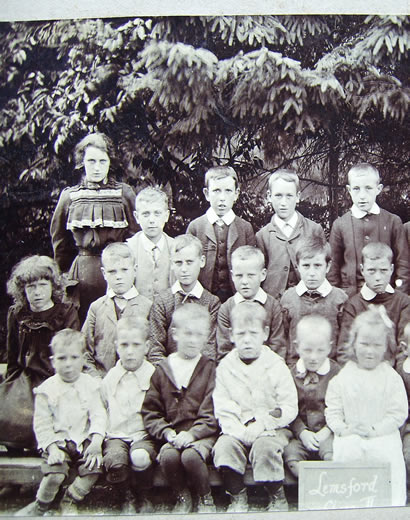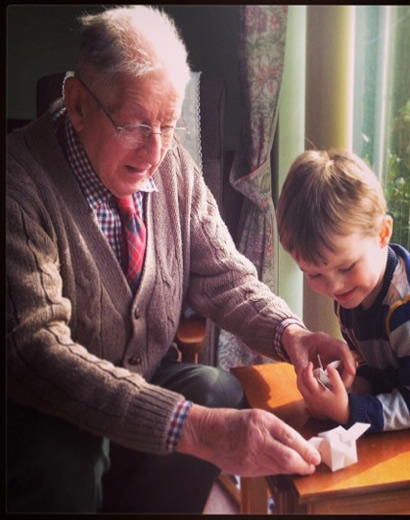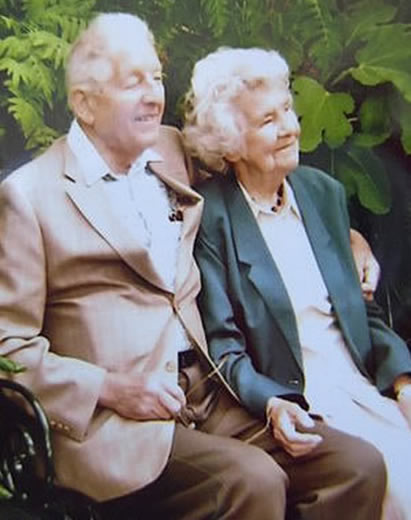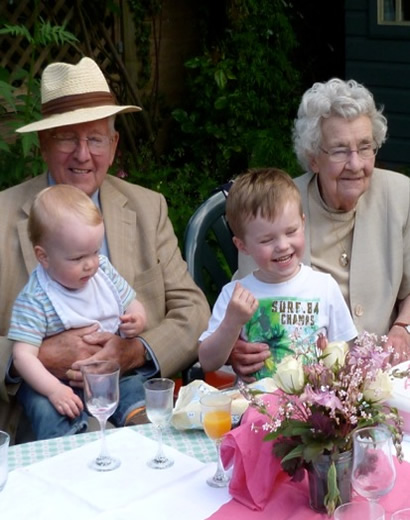School Memories
School Memories
I started school at Montem Street LCC infants school in North London when I was five years old in 1929, and my earliest recollections are of resting on low canvas beds at rest periods. In particular I remember hot summer afternoons when blinds were pulled to help make us all sleepy, I suppose. Classes were mixed boys and girls and at first it was all mostly play with sand trays, plasticine and slates.
Montem St. was built towards the end of the 19th century and was a large three storey building with infants on the ground floor, girls on the middle floor and boys on the top, and each group had its own designated playground. It had gas lighting but heating was by radiators fed from a large coke boiler in the basement. Toilets were across the play ground and in the boys the urinal was open to the sky but cubicles were under cover but very basic. Toilet rolls were not provided but some paper was usual available.. The school gates were locked during school sessions and the wall round the play ground had a high fence on top to prevent children climbing out. There were open sheds that were played in in wet weather and I recall the roofs had strengthening cross bars that could be swung on. In winter, in frost and snow, the boys who mostly wore boots with steel studs in, made slides down to the drains, some quite long, and when some of the younger masters also took their turn to slide down them it caused great delight.
In those days few children stayed to dinner and if they did they had their own sandwiches to eat in the play ground, for school dinners had not been thought of. Most children went home to lunch because few mums went out to work and the majority only lived a few minutes walk away. Play grounds were very popular and most children got back early so they could take part in the many seasonal pastimes. These included cigarette cards where you flicked your cards against your opponents leaning up against the wall. If you knocked any down they were yours , otherwise you lost your card. Marbles were always popular, especially big glass "alleys" and were often played on drain covers but more often in gutters on your way to school In the autumn conkers were the favourite, but being a London school these were in short supply and there were lots of secret recipes on how to make them extra hard and strong.There used to be a long line of chestnut trees at the side of the tramway up to Alexandria Palace from the bottom of Muswell Hill ( now just a road ) and in season boys used to hurl all sorts of missiles at the trees to knock the conkers down. Hoops and tops were still about but not as many as in our parents days, but yo-yos were plentiful when they came into fashion. Skipping ropes were the girls favourites and there were many complicated skipping rope games that the girls played very seriously in groups, but both boys and girls played hop-scotch. One very physical game that the boys played with two teams was called Jimmy Jimmy Knacker. . In one team one of the boys stood with his back to the wall and another boy bent over and put his head between his legs. The rest of the team about four or five boy copied him so you had a line of backs. The other team took it in turns to take a run and jump as far as they could straddling the chain of backs and getting as near to the boy at the wall as possible. When they were all on they all sang out " Jimmy jimmy knacker one two three, one two three and away! " While they did this they all bounced up and down trying to get the boys bending down to collapse. If one of the boys bending down was smaller stature then the jumpers all tried to land on him in the hope that the bouncing up and down would polish him off. It was so dangerous that most schools forbid it but it was still played when masters were not about.
There was not a lot of money about for toys and there was a lot of ingenuity in making your own and perhaps the most popular for boys was the ball bearing scooter. These were made by a dad or big brother using wood and large ball bearing wheels scrounged from garages and engineering works. The end product could be robust or frail depending on the skill of the maker, but all made a lot of noise as the wheels clattered over the cracks in paving stones, and they were sometimes banned from playgrounds. If you had a pair of roller skates you really had arrived and they were treasured until the wheels wore out. Bikes were few and far between in poor districts. In the noise of the playground during playtime if a fight broke out between two boys a shout of "Fight" would go up and a tight ring of spectators would gather round spurring on the participants until a teacher arrived to break it all up and take the culprits away for punishment.
I don’t remember many children wearing school uniform, but most of the boys wore school caps and the girls wore gym slips. In cold weather jerseys were the most popular for boys and I can still recall the smell of wet wool when they got wet on the way to school. In the depression of the thirties there were appeals for second hand clothes and for shoes for poor little kids who didn’t have any decent ones. I can remember when eating an apple often being asked by some poor little devil for the core when I had finished. Rickets were common and there were always several children in irons. Malnutrition was bad and the government of the day arranged for all children to be given half a pint of milk a day. This was delivered in bottles with cardboard lids with a press out for straws, using the old fashion metal crates. It was handed out by milk monitors at mid morning break to be drunk there and then.
In all classrooms desks were arranged in orderly lines and each child had their own desk. Naughty children tended to be put in front where the teacher could keep an eye on them. Desks were of wood in an iron frame with an integral tip up seat , and were provided in singles or pairs. Desk tops were of wood ,sloping and hinged to provide a storage space beneath , and with a mounting on the top right for a porcelain inkwell. It was the job of the ink monitors to periodically collect all these inkwells in large trays full of holes and take them to the cloakroom to wash them out. It was a mucky job partly because idle fingers used to push blotting paper in them that had to be probed out. They were then refilled with ink from a large stone bottle and replaced in the desks. The wooden tops of the desks were usually of soft white wood and consistent pressure with a pencil would impress lines like train lines running in to each other and older desks wore the scars of this practice. Most of the blackboards were of the old tripod mounting type using chalk but some were of a new tyrubber type on rollers. These also used chalk but you could get a lot more on them. Printing rollers were often used to put things like maps in your exercise books which were yours to keep. All other books were yours only for a session or in some cases a term.Slide projectors or magic lanterns as we called them were not used for every day work but occasionally for special occasions.
Every day started with a whistle in the playground when everybody stood still. At the second whistle classes formed up on their marks in the playground and teachers in charge then marched in each class in turn. Each morning started with assembly and prayers, followed by announcements. Discipline was strict and different teachers had different ways to make you toe the line. A favourite was a rap with a ruler, some threw chalk ( with considerable aim) but serious offences meant a visit to the headmaster to get "the cane and the book" for all canings were recorded. It was not usual to tell your parents about it, lest they administered their own displeasure.
As you got older , prefects were appointed who helped maintain discipline, for example , on stair landings to prevent running on the stairs. They were allowed to allocate" lines" or report you to a teacher but never any physical punishment. They could also watch out for bullying which went on then as it does today.
At the age of eleven I sat an exam but failed to get a scholarship at a grammar school but did get to the Tollington Park Central school, which was next door to Montem Street but an older building. Lighting was still gas but the heating was provided by open coal fires. These burnt huge pieces of coal and you roasted in the front of the class but froze at the back. We were allowed at mid morning break to put potatoes under the fire so they would be roasted at lunch time. Usually the heat was so great they would be burnt black outside but what was left inside was delicious fluffy potato.
At the age of fourteen we moved to Enfield in a different county and I had to join the George Spicer Central School .I was surprised at this school to find that some masters wore gowns, a thing they had not done at Tolly. This too was boys only and similar to my old school with some differences. At Tolly sports in the limited play ground had been limited to cricket with a painted wicket on a wall and a soft ball but at my new school we had access to Bushill Park so cricket was played properly.Some boys had their own equipment but there were plenty of pads and bats for all that wanted them. In football too we had proper pitches to play on and in a back corner of the sports masters classroom there was a pile of old football boots so you could find a pair that fitted that were yours until you either grew out of them or gave up football and then they went back on the pile. . The school was evacuated in 1939 and the half dozen students including me studying for this exam spent their time in the Headmasters study where he did his best to prepare us for it.We took the exam during a week in Sept 1940 as the daylight bombing finished and the night bombing started. All the windows were blown out at the building in Russell Square where we went and we spent time down the shelter in the basement when the raiders were overhead. Sadly I failed my Matric and in October I went to work and school days were over. .
Montem St. was built towards the end of the 19th century and was a large three storey building with infants on the ground floor, girls on the middle floor and boys on the top, and each group had its own designated playground. It had gas lighting but heating was by radiators fed from a large coke boiler in the basement. Toilets were across the play ground and in the boys the urinal was open to the sky but cubicles were under cover but very basic. Toilet rolls were not provided but some paper was usual available.. The school gates were locked during school sessions and the wall round the play ground had a high fence on top to prevent children climbing out. There were open sheds that were played in in wet weather and I recall the roofs had strengthening cross bars that could be swung on. In winter, in frost and snow, the boys who mostly wore boots with steel studs in, made slides down to the drains, some quite long, and when some of the younger masters also took their turn to slide down them it caused great delight.
In those days few children stayed to dinner and if they did they had their own sandwiches to eat in the play ground, for school dinners had not been thought of. Most children went home to lunch because few mums went out to work and the majority only lived a few minutes walk away. Play grounds were very popular and most children got back early so they could take part in the many seasonal pastimes. These included cigarette cards where you flicked your cards against your opponents leaning up against the wall. If you knocked any down they were yours , otherwise you lost your card. Marbles were always popular, especially big glass "alleys" and were often played on drain covers but more often in gutters on your way to school In the autumn conkers were the favourite, but being a London school these were in short supply and there were lots of secret recipes on how to make them extra hard and strong.There used to be a long line of chestnut trees at the side of the tramway up to Alexandria Palace from the bottom of Muswell Hill ( now just a road ) and in season boys used to hurl all sorts of missiles at the trees to knock the conkers down. Hoops and tops were still about but not as many as in our parents days, but yo-yos were plentiful when they came into fashion. Skipping ropes were the girls favourites and there were many complicated skipping rope games that the girls played very seriously in groups, but both boys and girls played hop-scotch. One very physical game that the boys played with two teams was called Jimmy Jimmy Knacker. . In one team one of the boys stood with his back to the wall and another boy bent over and put his head between his legs. The rest of the team about four or five boy copied him so you had a line of backs. The other team took it in turns to take a run and jump as far as they could straddling the chain of backs and getting as near to the boy at the wall as possible. When they were all on they all sang out " Jimmy jimmy knacker one two three, one two three and away! " While they did this they all bounced up and down trying to get the boys bending down to collapse. If one of the boys bending down was smaller stature then the jumpers all tried to land on him in the hope that the bouncing up and down would polish him off. It was so dangerous that most schools forbid it but it was still played when masters were not about.
There was not a lot of money about for toys and there was a lot of ingenuity in making your own and perhaps the most popular for boys was the ball bearing scooter. These were made by a dad or big brother using wood and large ball bearing wheels scrounged from garages and engineering works. The end product could be robust or frail depending on the skill of the maker, but all made a lot of noise as the wheels clattered over the cracks in paving stones, and they were sometimes banned from playgrounds. If you had a pair of roller skates you really had arrived and they were treasured until the wheels wore out. Bikes were few and far between in poor districts. In the noise of the playground during playtime if a fight broke out between two boys a shout of "Fight" would go up and a tight ring of spectators would gather round spurring on the participants until a teacher arrived to break it all up and take the culprits away for punishment.
I don’t remember many children wearing school uniform, but most of the boys wore school caps and the girls wore gym slips. In cold weather jerseys were the most popular for boys and I can still recall the smell of wet wool when they got wet on the way to school. In the depression of the thirties there were appeals for second hand clothes and for shoes for poor little kids who didn’t have any decent ones. I can remember when eating an apple often being asked by some poor little devil for the core when I had finished. Rickets were common and there were always several children in irons. Malnutrition was bad and the government of the day arranged for all children to be given half a pint of milk a day. This was delivered in bottles with cardboard lids with a press out for straws, using the old fashion metal crates. It was handed out by milk monitors at mid morning break to be drunk there and then.
In all classrooms desks were arranged in orderly lines and each child had their own desk. Naughty children tended to be put in front where the teacher could keep an eye on them. Desks were of wood in an iron frame with an integral tip up seat , and were provided in singles or pairs. Desk tops were of wood ,sloping and hinged to provide a storage space beneath , and with a mounting on the top right for a porcelain inkwell. It was the job of the ink monitors to periodically collect all these inkwells in large trays full of holes and take them to the cloakroom to wash them out. It was a mucky job partly because idle fingers used to push blotting paper in them that had to be probed out. They were then refilled with ink from a large stone bottle and replaced in the desks. The wooden tops of the desks were usually of soft white wood and consistent pressure with a pencil would impress lines like train lines running in to each other and older desks wore the scars of this practice. Most of the blackboards were of the old tripod mounting type using chalk but some were of a new tyrubber type on rollers. These also used chalk but you could get a lot more on them. Printing rollers were often used to put things like maps in your exercise books which were yours to keep. All other books were yours only for a session or in some cases a term.Slide projectors or magic lanterns as we called them were not used for every day work but occasionally for special occasions.
Every day started with a whistle in the playground when everybody stood still. At the second whistle classes formed up on their marks in the playground and teachers in charge then marched in each class in turn. Each morning started with assembly and prayers, followed by announcements. Discipline was strict and different teachers had different ways to make you toe the line. A favourite was a rap with a ruler, some threw chalk ( with considerable aim) but serious offences meant a visit to the headmaster to get "the cane and the book" for all canings were recorded. It was not usual to tell your parents about it, lest they administered their own displeasure.
As you got older , prefects were appointed who helped maintain discipline, for example , on stair landings to prevent running on the stairs. They were allowed to allocate" lines" or report you to a teacher but never any physical punishment. They could also watch out for bullying which went on then as it does today.
At the age of eleven I sat an exam but failed to get a scholarship at a grammar school but did get to the Tollington Park Central school, which was next door to Montem Street but an older building. Lighting was still gas but the heating was provided by open coal fires. These burnt huge pieces of coal and you roasted in the front of the class but froze at the back. We were allowed at mid morning break to put potatoes under the fire so they would be roasted at lunch time. Usually the heat was so great they would be burnt black outside but what was left inside was delicious fluffy potato.
At the age of fourteen we moved to Enfield in a different county and I had to join the George Spicer Central School .I was surprised at this school to find that some masters wore gowns, a thing they had not done at Tolly. This too was boys only and similar to my old school with some differences. At Tolly sports in the limited play ground had been limited to cricket with a painted wicket on a wall and a soft ball but at my new school we had access to Bushill Park so cricket was played properly.Some boys had their own equipment but there were plenty of pads and bats for all that wanted them. In football too we had proper pitches to play on and in a back corner of the sports masters classroom there was a pile of old football boots so you could find a pair that fitted that were yours until you either grew out of them or gave up football and then they went back on the pile. . The school was evacuated in 1939 and the half dozen students including me studying for this exam spent their time in the Headmasters study where he did his best to prepare us for it.We took the exam during a week in Sept 1940 as the daylight bombing finished and the night bombing started. All the windows were blown out at the building in Russell Square where we went and we spent time down the shelter in the basement when the raiders were overhead. Sadly I failed my Matric and in October I went to work and school days were over. .





